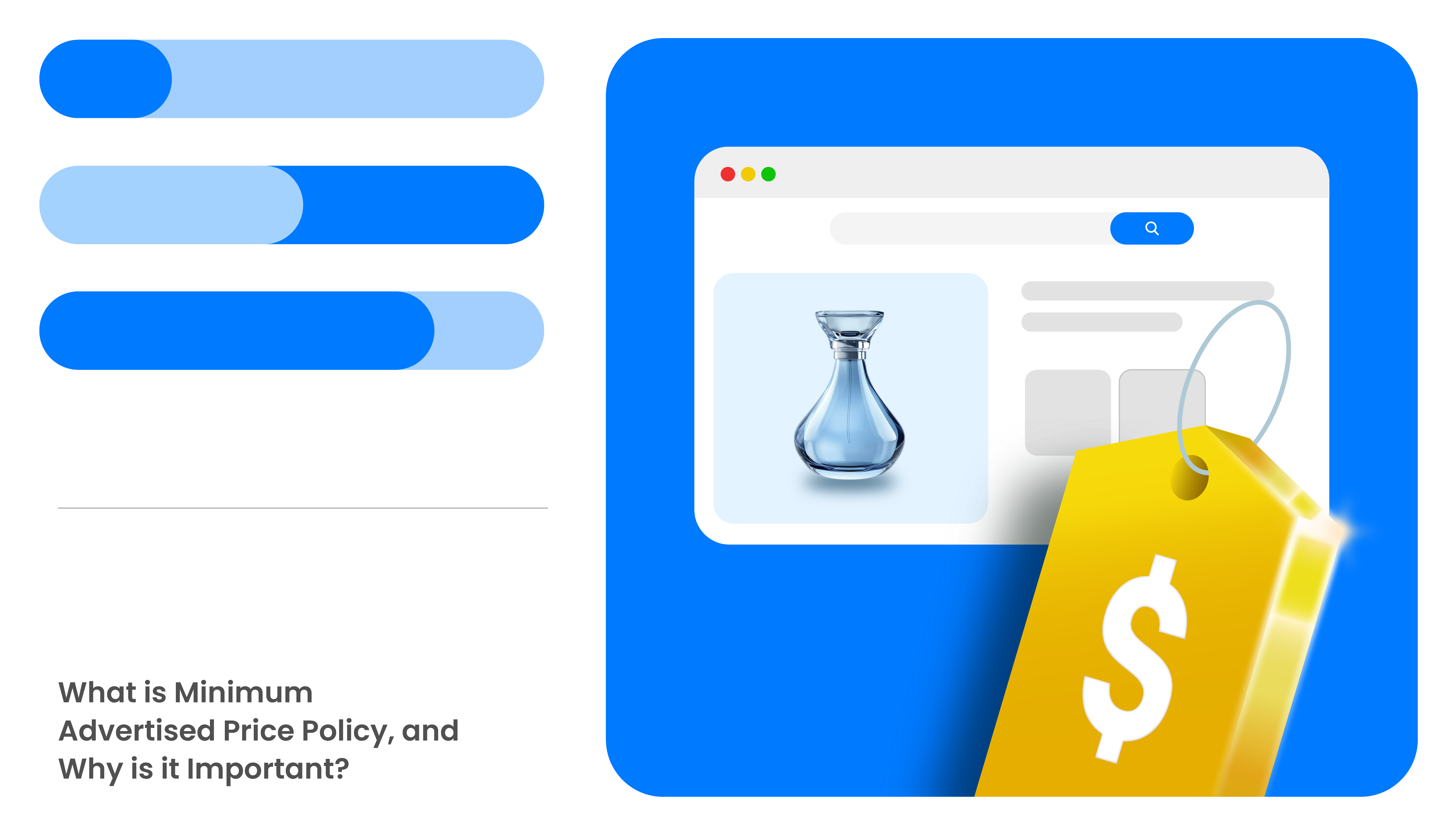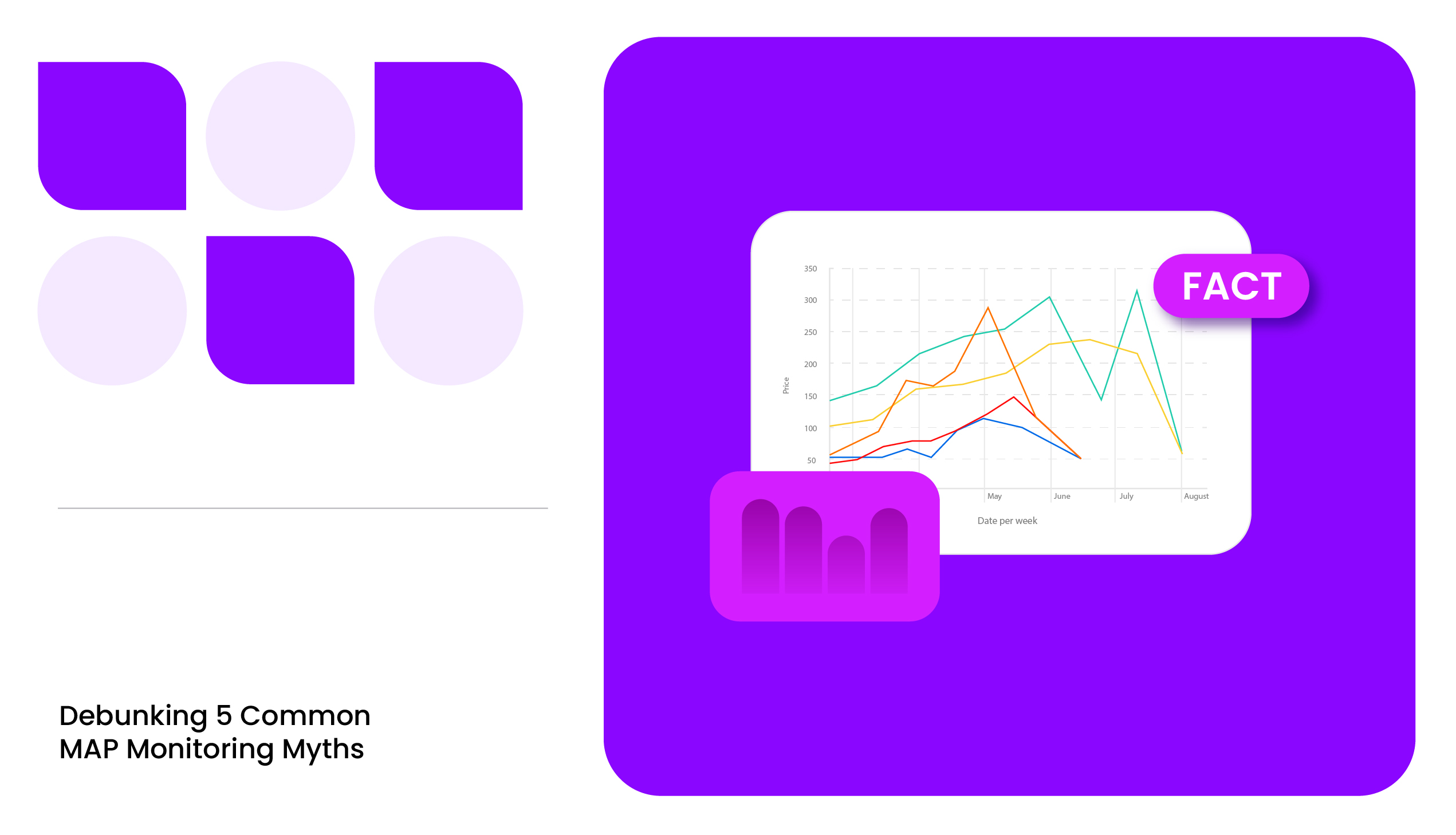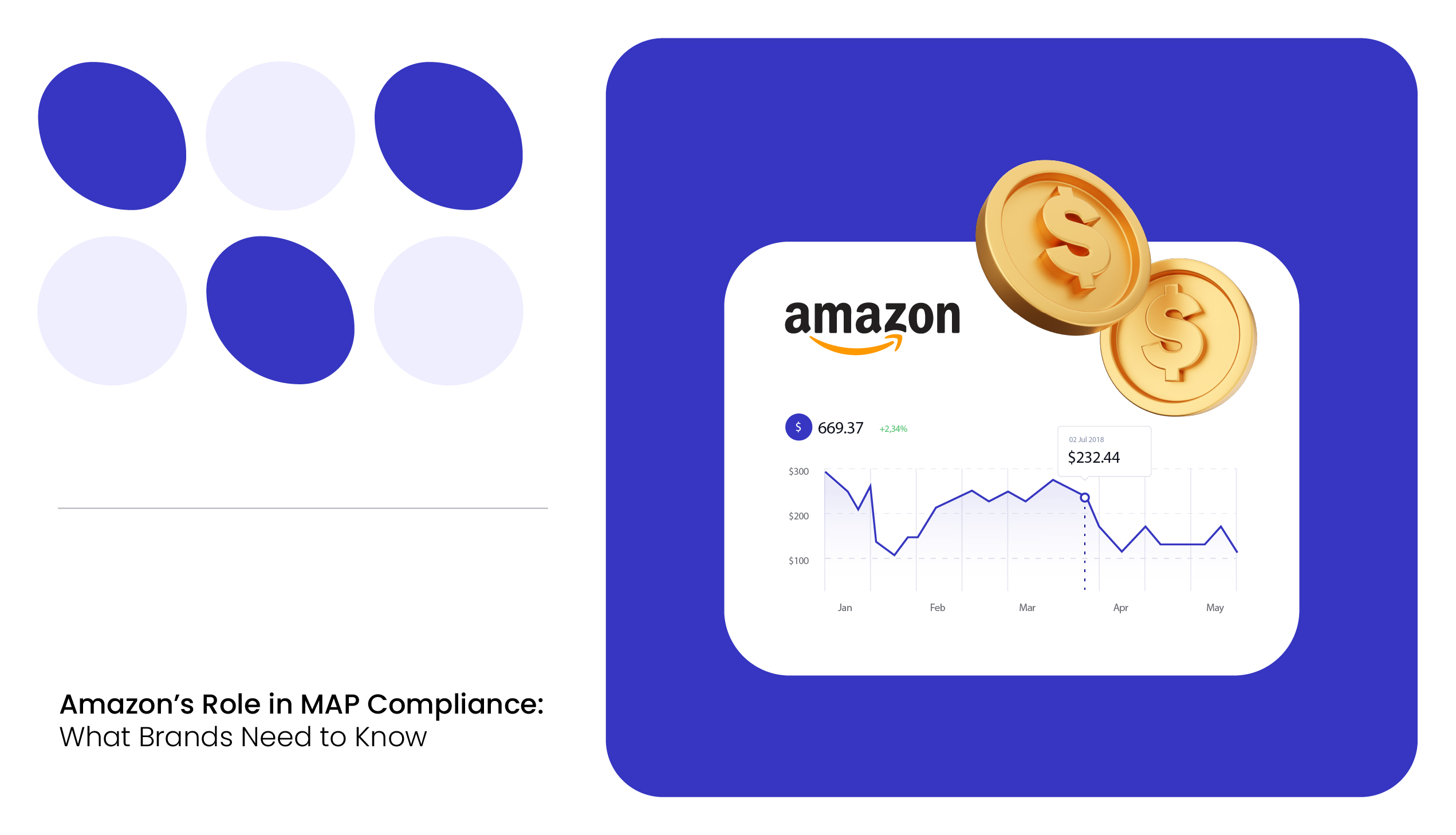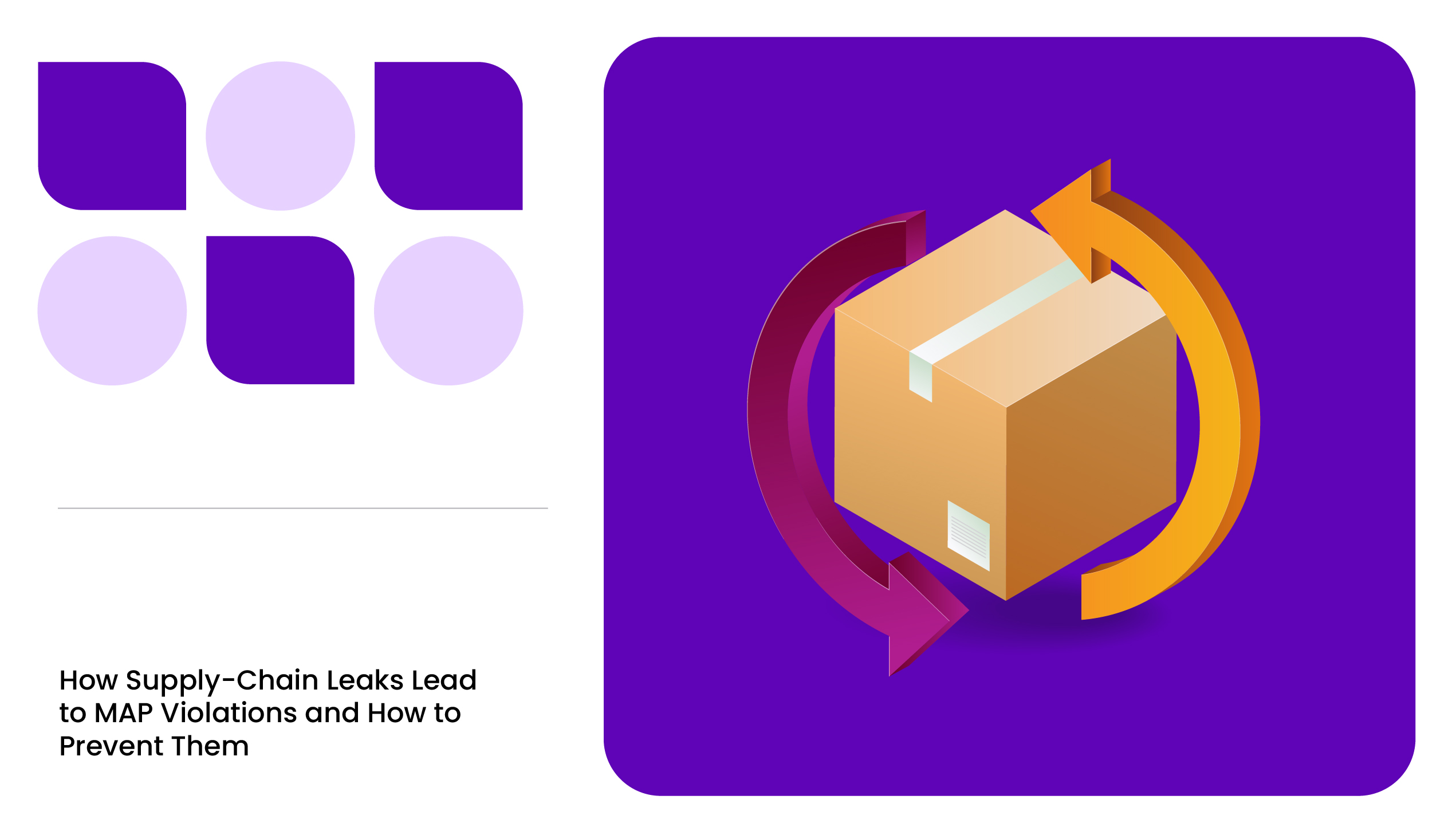As an e-commerce brand manager and pricing specialist, you manage a lot of SKUs for your brand and spend years building a reputation for quality, and your products command a strong market presence.
However, imagine a situation where you notice a troubling pattern—your items are being advertised at rock-bottom prices across multiple online retailers. Consumers now associate your brand with discounts, and your trusted brick-and-mortar partners are struggling to compete.
What happened? Uncontrolled price erosion due to inconsistent pricing strategies.
This is where a Minimum Advertised Price policy becomes crucial. Without one, brands risk losing control over their pricing, diminishing perceived value, and eroding profit margins.
A well-enforced policy, along with a MAP monitoring tool, ensures that all retailers advertise your products at a fair and sustainable price, preserving your brand integrity and retailer relationships.
What is a MAP Policy?
A Minimum Advertised Price policy is a pricing strategy set by manufacturers that establishes the lowest price at which a product can be advertised. It is also known as the MAP policy.
This does not restrict retailers from selling below the MAP price, but it does prevent them from publicly displaying prices lower than the agreed-upon threshold.
MAP policies are particularly relevant in e-commerce, where price competition is fierce. Online retailers often engage in price wars, which can lead to brand dilution, lower perceived value, and reduced profit margins. By implementing a MAP policy, brands can ensure that their products are consistently advertised at prices that reflect their value and market position.
READ MORE | Want to Select the Right MAP Monitoring Software for Your Brand? Check out the Best MAP Monitoring Software You Should Consider for E-Commerce
Benefits of an Effective MAP Policy
A well-implemented MAP policy offers multiple advantages for brands, retailers, and the overall marketplace.
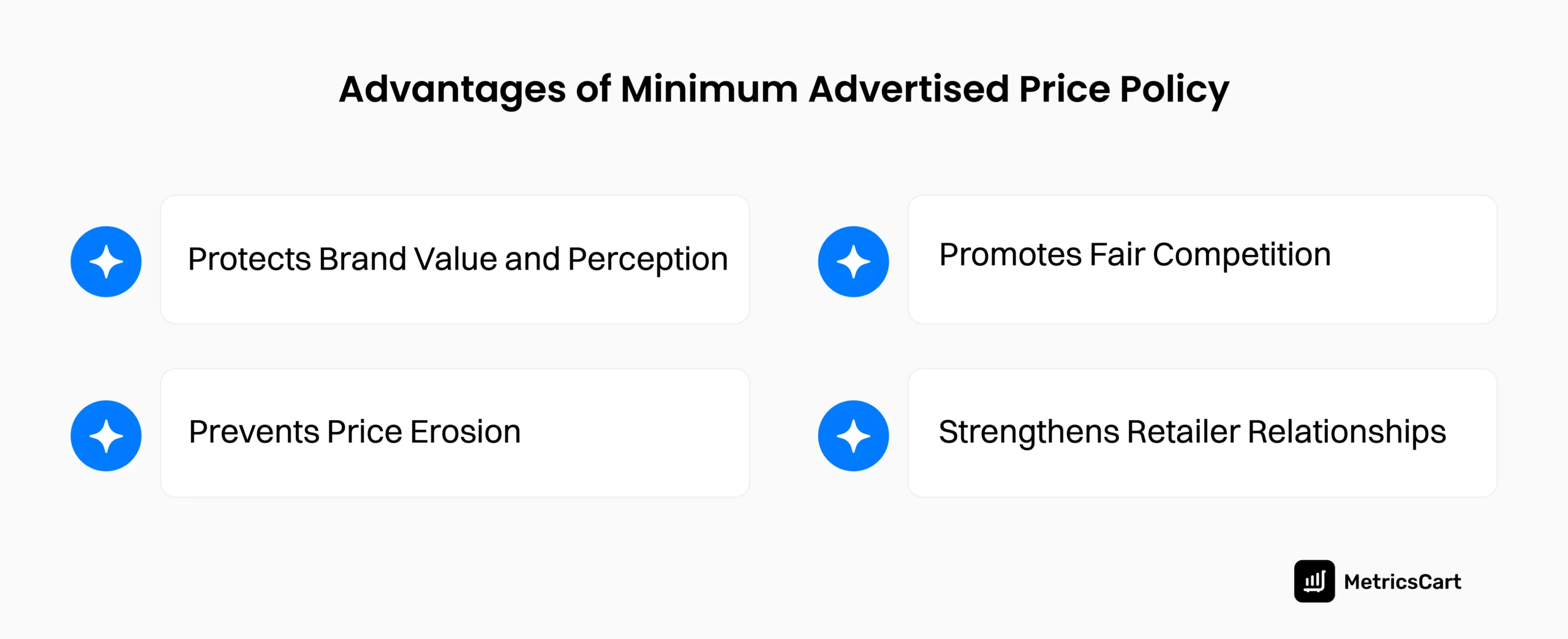
Protects Brand Value and Perception
One of the most significant risks for brands in today’s retail landscape is the dilution of perceived value. If your products are constantly advertised at deep discounts, consumers begin to question whether they are high-quality.
For example, imagine a luxury watch brand that typically sells for $1,000 at high-end department stores. Suddenly, an online retailer starts advertising the same watch for $500. This devalues the product in the eyes of customers, making them less willing to pay full price in the future.
A strong MAP policy prevents this issue by ensuring that all retailers advertise your products at a consistent, brand-appropriate price.
Prevents Price Erosion
Without a MAP policy, retailers engage in price wars, continually lowering their advertised prices to attract customers. If one retailer drops the advertised price, others will quickly follow, creating a domino effect of devaluation.
A MAP policy stops price erosion before it starts, ensuring that:
- Your products retain their value
- Retailers remain profitable and motivated to sell your products
- Your brand doesn’t become known for excessive discounts
Promotes Fair Competition
Without a MAP policy, some retailers might dominate the market by using deep discounting strategies that others can’t afford to match. This would lead to market monopolization, where only a few large retailers control product sales and independent retailers might be forced out of business.
MAP policies ensure that all retailers—big or small—have an equal opportunity to sell products at a fair price. This effectively increases the sales channels, resulting in better sales results.
Strengthens Retailer Relationships
When manufacturers allow rampant price undercutting, retailers may hesitate to carry their products, fearing that they won’t be able to compete with online marketplaces. They might also choose to sell a competitor brand instead of your products.
By setting MAP policies, brands give retailers confidence in product profitability and long-term partnerships and help them focus on customer experience rather than price battles.

Steps to Create a MAP Policy
Developing a MAP policy requires careful planning and collaboration with retailers to ensure compliance without alienation. Below are the essential steps to creating a strong and sustainable MAP policy.
Research and Understand Your Competitors
The first step in developing a MAP policy is to conduct thorough research on your competitors and analyze their pricing strategies for similar products in the market. You can use price monitoring software to analyze your competitors’ price trends and patterns.
Once you identify the common pricing patterns in competitor products, assess how your product’s value proposition compares to its offerings. This will help you create a competitive and realistic MAP pricing strategy that aligns with legal requirements.
Analyze the Current Brand Position
Next, you need to evaluate your brand’s current market position and performance. To this end, you can review historical sales data to understand how price changes have affected sales volume and revenue.
Moreover, you should analyze the target audience’s price sensitivity and understand how much consumers are willing to pay, which can guide your MAP decisions.
This analysis will help you determine the appropriate pricing strategy for your products.
Determine Suitable Price Margins
You need to decide on the appropriate margins while making your MAP pricing policy by considering the following factors:
- Cost Analysis: Calculate all costs associated with bringing your product to market, including production, distribution, and marketing expenses, to ensure that the MAP covers these costs while allowing for a reasonable profit margin.
- Market Conditions: Take into account current market conditions and economic factors that may influence pricing, such as inflation or changes in consumer behavior.
- Flexibility: While setting price margins, consider whether you want to allow for promotional discounts during special events or sales seasons without violating the MAP.
Create a MAP Policy Template
Once you have completed the first three steps, you need to draft a MAP policy template before sharing it across your distribution network. Please note that a generic, off-the-internet template is never the ideal option.
The MAP policy template must include specific details about the minimum advertised prices for each product, any exceptions to the policy, and the rationale behind setting these prices. In addition, you must state the penalties for non-compliance, which may include warnings, suspension of supply, or removal from authorized retailer lists.
Consult With a Legal Advisor
Before finalizing your MAP policy, it’s crucial to consult with a legal advisor who specializes in antitrust law and pricing regulations. This is vital to avoid potential legal issues related to price-fixing accusations or anti-competitive behavior.
Enforce MAP Pricing Policy
The last and most crucial step is MAP enforcement, where you will ensure that online sellers comply with MAP policy across all your retail networks. A firm MAP policy will ensure that the brand does not grant favors to select retailers and has a consistent brand image.
You should leverage MAP monitoring tools to track compliance with the MAP policy across various sales channels and regularly check retailer advertisements to ensure adherence.
Moreover, you must also establish a system for responding to violations promptly. This may involve sending warning letters or taking more severe actions if breaches persist.
READ MORE | Struggling to Enforce Your MAP Policy? Check out A Beginner’s Guide to MAP Enforcement in E-Commerce
Conclusion
A well-enforced Minimum Advertised Price policy helps brands maintain pricing integrity, protect brand value, and foster fair competition. Without an effective MAP policy, price wars can erode profits and damage consumer trust. However, success depends on clear policies, retailer cooperation, and consistent enforcement.
By defining the right pricing strategy and using automated monitoring tools, brands can prevent violations and keep pricing stable. MetricsCart MAP monitoring software simplifies this process by providing real-time tracking and automated alerts, ensuring compliance across all sales channels.
Monitor and Enforce your MAP policy with MetricsCart.
FAQs
No, MAP policies are legal in many regions, including the U.S., as long as they do not constitute price-fixing. They regulate advertised prices, not the actual sale price, making them compliant with antitrust laws.
No, but many premium brands and manufacturers implement MAP policies to protect brand integrity and profit margins. Some lower-cost brands may opt not to enforce MAP due to the nature of their pricing model.
Penalties vary but can include:
1. Warnings and probation periods
2. Loss of promotional funds or discounts
3. Termination of retailer partnerships
If a large retailer does MAP violation, manufacturers should communicate directly, issue formal warnings, and if necessary, reduce supply or terminate agreements to uphold policy integrity.
MAP restricts advertised prices, while Unilateral Pricing Policy (UPP) mandates the final sale price. UPP is more restrictive and is often used for luxury brands.
Common mistakes in MAP policy enforcement include using generic templates, failing to educate resellers, overcomplicating the policy, lack of proper monitoring tools, etc.

